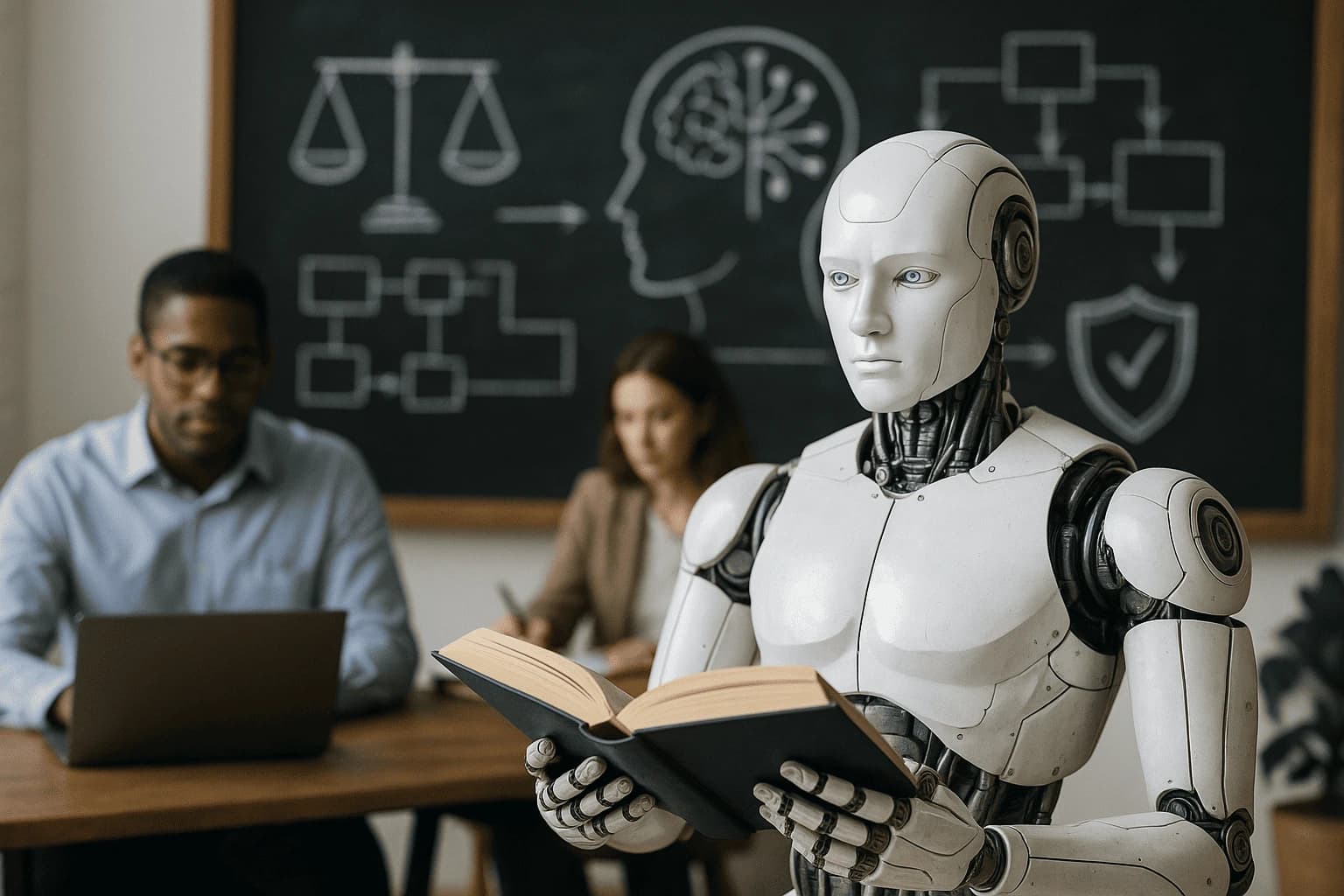.webp&w=3840&q=75)
* All product/brand names, logos, and trademarks are property of their respective owners.
In 2025, the question of whether artificial intelligence can truly understand human emotions better than people themselves is no longer a far-fetched sci-fi fantasy—it’s a real, pressing debate. With emotional AI making headlines globally, from therapy chatbots offering comfort to facial recognition systems gauging crowd sentiment, the stakes are high. As AI continues to evolve, so too does its role in interpreting and responding to human emotions. But can it actually do this better than we can?
At the heart of emotional AI lies affective computing—a field that blends psychology, neuroscience, and machine learning. From analyzing vocal tone to reading facial micro-expressions and even interpreting sentiment in written text, machines are learning to "read the room" like never before. In fact, some AI systems in 2025 claim to detect subtle emotional shifts faster and more accurately than the average human observer.
Why does this matter? Emotional intelligence is vital in nearly every human interaction—from customer service and education to mental health and leadership. If machines can match or exceed human capabilities in these areas, it could redefine how we connect, communicate, and coexist with technology. But with such power comes serious ethical concerns. Is AI truly empathic, or just mimicking emotions? Can a machine ever grasp the complexity of human feelings rooted in culture, experience, and memory?
This blog explores the latest breakthroughs in emotional AI, ethical AI, its real-world applications, and whether it truly stands a chance at understanding us better than we understand each other. As we navigate the blurred lines between artificial empathy and authentic emotion, it’s time for a deep dive into what AI emotional intelligence looks like in the age of AI.
Understanding emotions through AI starts with data—lots of it. Emotional AI systems rely on multimodal input such as facial expressions, voice modulation, body language, and written text to gauge human feelings. By using natural language processing (NLP), AI can analyze tone, sentiment, and choice of words in conversations. Tools like sentiment analysis APIs are now deeply integrated into chatbots and virtual assistants to detect joy, anger, fear, or sarcasm in real time.
Facial recognition tech interprets subtle changes in expression—like the tightening of the jaw or raised eyebrows—while speech emotion recognition (SER) captures the nuances in pitch, tempo, and vocal intensity. For example, a health chatbot might detect stress in a user’s voice and respond more compassionately.
At the core of emotional AI lies affective computing, a term coined by Rosalind Picard in the '90s but now supercharged by 2025’s tech stack. Machine learning algorithms—especially deep neural networks—train on massive emotional datasets sourced from social media, films, interviews, and real-world interactions.
Advancements in multimodal learning allow AI to combine inputs from text, audio, and visuals for better emotion detection. Companies are also leveraging transformer models (like GPT or BERT) fine-tuned for emotional contexts, improving the system’s ability to grasp human sentiment holistically.
This year has seen major leaps in emotional AI. Startups are developing wearable devices that continuously monitor emotional states, while some governments are trialing AI systems to assess emotional stress in public services. Emotional AI tools are now integrated into mental health apps, helping detect early signs of depression or anxiety with over 85% accuracy, as per recent studies.
A 2025 highlight: researchers have unveiled an AI that can recognize complex emotional states—like bittersweet nostalgia or suppressed anger—something previously thought exclusive to human intuition.
One of the most compelling reasons AI outperforms humans in emotional recognition is its ability to process massive amounts of data at lightning speed. A human can only read a handful of emotional cues at once—facial expression, tone of voice, perhaps body posture. But an AI can analyze millions of data points per second, simultaneously tracking facial movement, vocal inflection, linguistic patterns, and even biometric indicators like heart rate (via wearables).
For example, in large call centers, AI emotion analytics tools are being used to monitor thousands of customer interactions in real-time. The AI flags frustrated callers within seconds and routes them to experienced agents—something no human supervisor could do at scale.
Humans are emotional creatures, and that’s both a strength and a weakness. We bring bias, fatigue, and mood fluctuations into how we perceive others. AI, however, evaluates emotional input based on pure data, offering more consistent and objective insights.
An AI analyzing interview candidates, for example, isn’t swayed by a bad day or subconscious biases. It focuses on measurable cues: nervous vocal patterns, inconsistent eye contact, or shifts in tone. This objectivity makes emotional AI incredibly valuable in sectors like HR, customer experience, and education—where accurate emotional reading can impact decision-making.
In Japan, some schools use AI-powered robots to read students’ emotional engagement during class and suggest real-time teaching adjustments. In the U.S., AI in mental health track users' emotional changes over time and provide personalized cognitive behavioral therapy suggestions.
In Dubai, customer service kiosks equipped with emotion AI adjust their interaction tone based on facial expressions—switching to a calming voice if users seem agitated. These implementations show how AI is not just detecting emotions but adapting in real-time to improve outcomes.
Despite AI’s impressive emotional detection capabilities, it still falls short in one critical area: emotional nuance. Human emotions are layered, culturally influenced, and often contradictory. While AI might detect that someone is "angry," it cannot easily discern if that anger is playful, suppressed, ironic, or justified by context.
For instance, sarcasm—a common form of emotional expression—is notoriously hard for machines to understand. A comment like “Great, just what I needed” during a frustrating moment might be misinterpreted by AI as positive sentiment. Moreover, emotional cues vary across cultures; a smile in one region might mean politeness, while in another, it could signal discomfort.
Emotional AI raises serious ethical questions, especially when used without consent or in high-stakes environments. Imagine walking into a store and being evaluated by an emotion-sensing camera without your knowledge. That’s already happening in some parts of the world.
There's also concern about data misuse. Emotions are deeply personal—using them for marketing, surveillance, or social scoring (as seen in some experimental government programs) walks a fine line between innovation and intrusion. Who owns emotional data? How is it stored, used, and protected? These are unresolved and urgent questions in 2025.
Additionally, there’s the risk of emotional manipulation. AI systems trained to detect vulnerability can be programmed to exploit it—nudging users toward purchases, votes, or behaviors based on their emotional state.
AI might read emotions faster and more consistently, but it doesn’t “feel” anything. It lacks the life experiences, empathy, and moral reasoning that guide human emotional responses. A therapist who notices a patient’s sadness can offer empathy drawn from personal experience. AI, on the other hand, simply executes a routine.
In emotional intelligence, context is everything. And context is something humans navigate intuitively—something even the most advanced AI still struggles to replicate.
As we’ve seen in this deep dive, emotional AI in 2025 has reached remarkable milestones. It can detect emotions across multiple channels—text, voice, facial expression—with speed and scale unmatched by humans. It’s already changing industries: from therapy bots and classroom engagement monitors to customer service and HR screening.
Yet, the more we marvel at AI’s emotional capabilities, the more we must recognize its limitations. Emotional nuance, cultural context, and authentic empathy remain deeply human traits. AI can simulate emotion, but it cannot feel. It can respond, but it cannot relate. And that distinction is crucial in fields like mental health, interpersonal relationships, and ethics.
As emotional AI continues to integrate into our lives, the question isn't whether it will replace human emotional intelligence—it won’t. The real opportunity lies in collaboration. Imagine a future where emotional AI enhances human understanding, offering insights that help us connect more meaningfully, not replace those connections.
In the end, perhaps the goal shouldn’t be for AI to feel more like us, but for us to use AI to feel more deeply, more clearly, and more compassionately. The machines may be learning to “understand” emotions—but the responsibility for empathy still rests with us.

1 December 2025

22 November 2025
No comments yet. Be the first to comment!